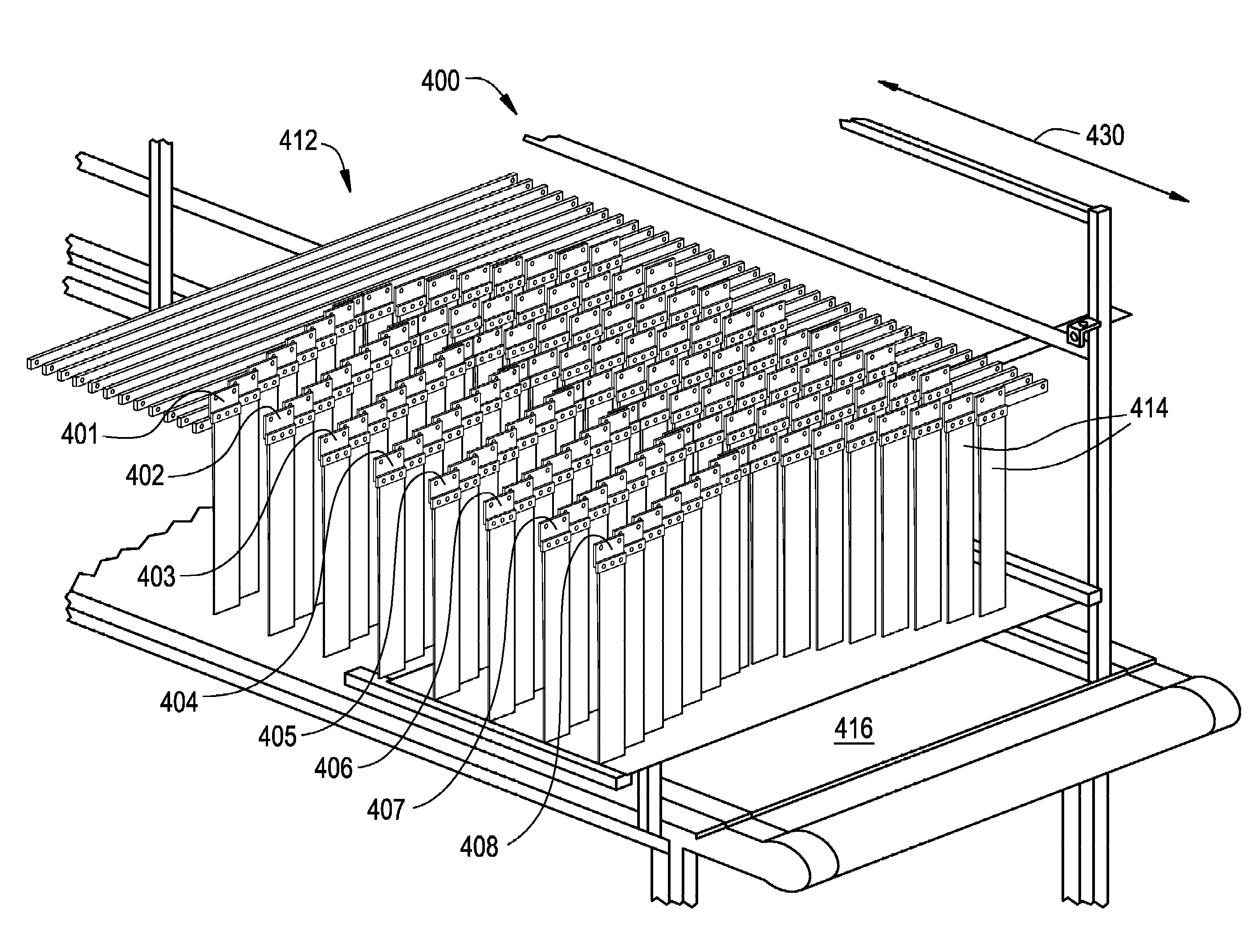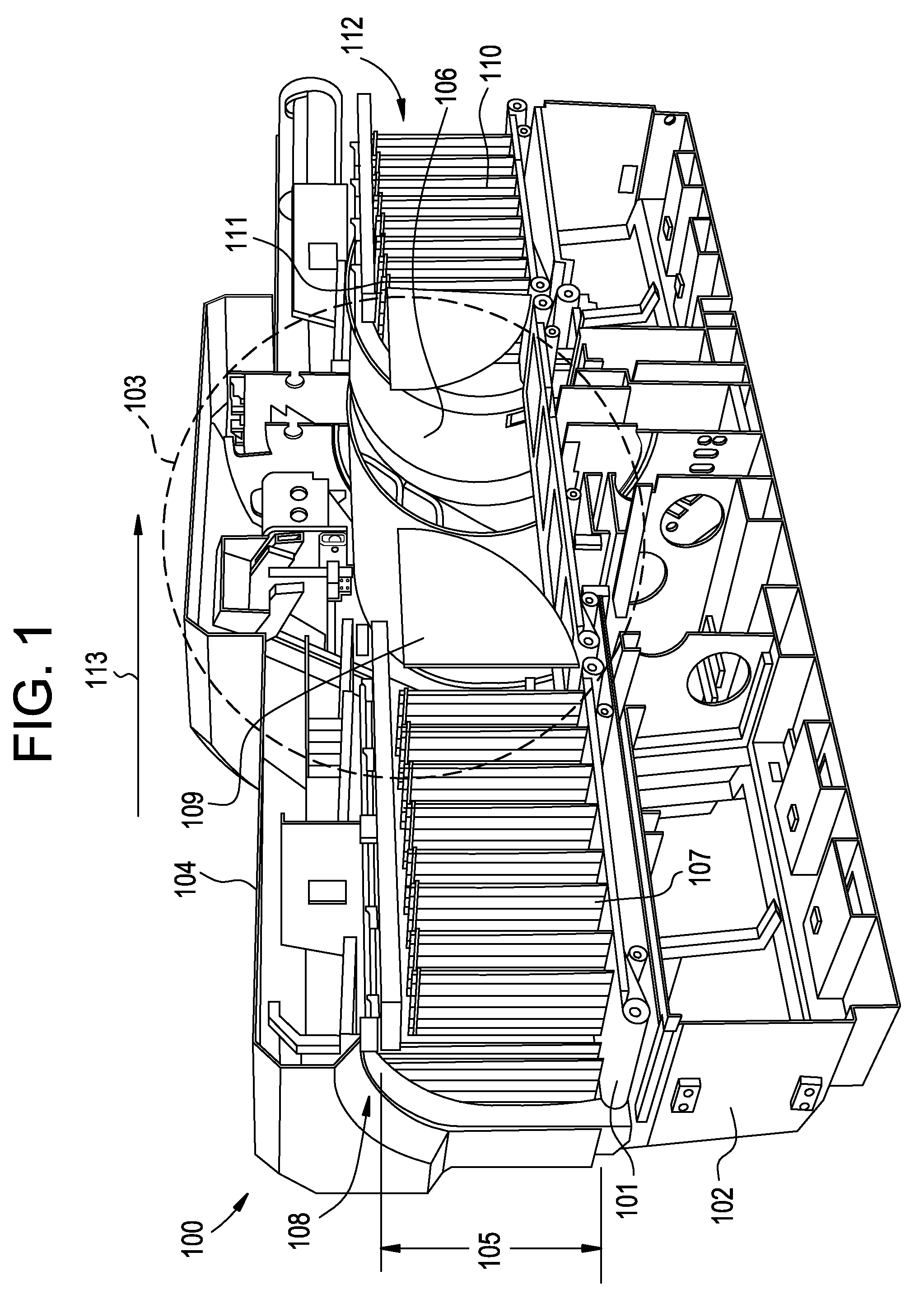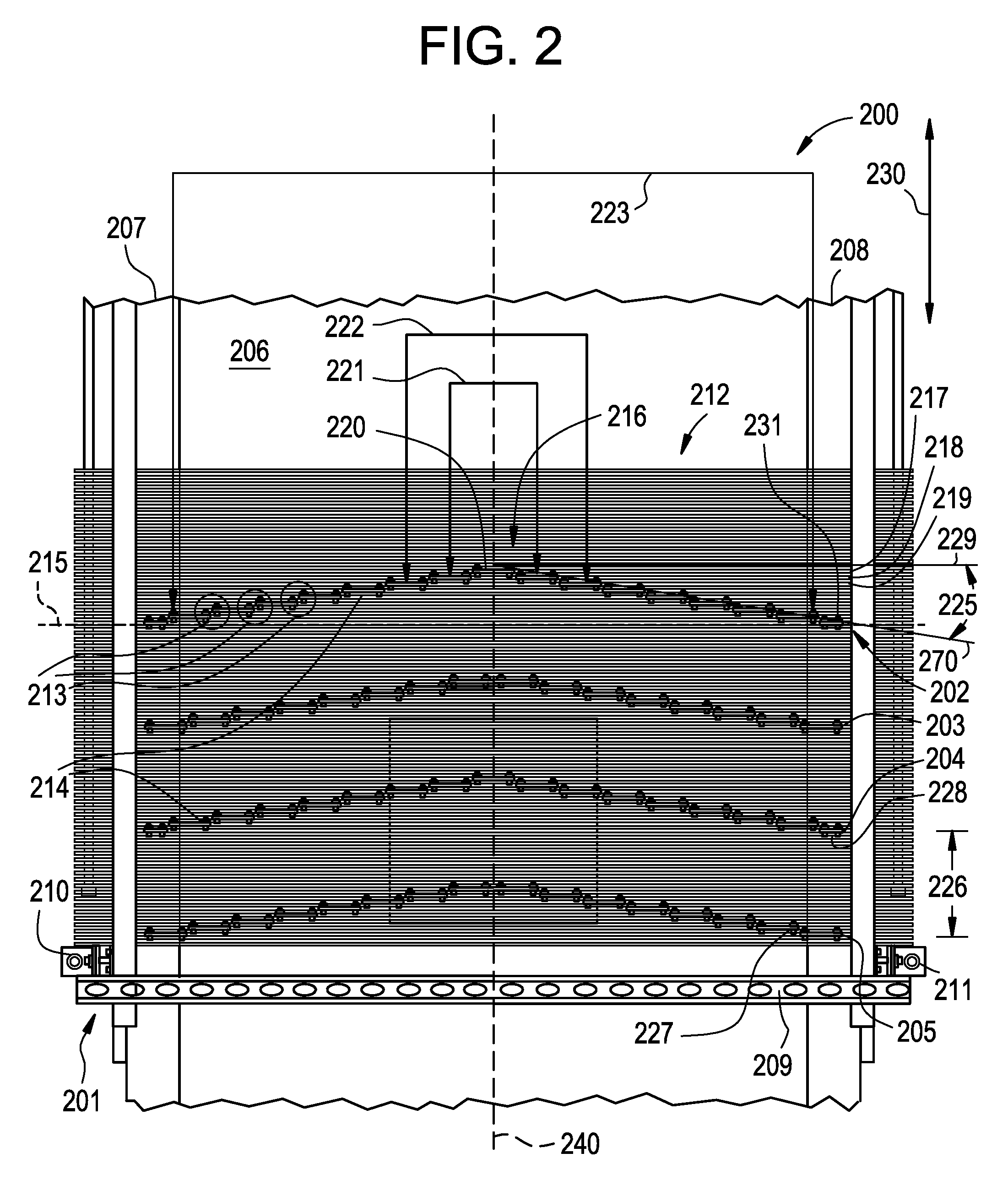Method and apparatus for providing radiation shielding for non-invasive inspection systems
a technology of radiation shielding and inspection system, applied in the field of radiation shielding systems, can solve the problems of human tissue damage, slats from one strip curtain often entanglement the slats of one or more other strip curtains, and achieve the effects of reducing bag jams, improving baggage throughput, and simple and cost-effective manufacturing and installation
- Summary
- Abstract
- Description
- Claims
- Application Information
AI Technical Summary
Benefits of technology
Problems solved by technology
Method used
Image
Examples
Embodiment Construction
[0027]Reference is made herein to the accompanying drawings briefly described above, which show by way of illustration various embodiments of the invention. Persons of ordinary skill in the above-referenced technological field will recognize that other embodiments may be utilized, and that various changes may be made without departing from the scope of the claimed invention.
[0028]As used herein, an element or step recited in the singular and proceeded with the word “a” or “an” includes plural elements or steps, unless exclusion of such plural elements or steps is explicitly recited.
[0029]FIG. 2 is a top view of an embodiment of a radiation shield having four strip curtains, each arranged in a non-planar shape. Any type of non-planar (e.g., three-dimensional) shape may be used, a non-limiting example of which is a chevron-shape. As used herein, “chevron-shape” refers to a “V,”“U,” inverted “V,” or inverted “U” arrangement of radiation shielding material. As used herein, “radiation sh...
PUM
| Property | Measurement | Unit |
|---|---|---|
| curtain angles | aaaaa | aaaaa |
| distances | aaaaa | aaaaa |
| EDS | aaaaa | aaaaa |
Abstract
Description
Claims
Application Information
 Login to View More
Login to View More - R&D
- Intellectual Property
- Life Sciences
- Materials
- Tech Scout
- Unparalleled Data Quality
- Higher Quality Content
- 60% Fewer Hallucinations
Browse by: Latest US Patents, China's latest patents, Technical Efficacy Thesaurus, Application Domain, Technology Topic, Popular Technical Reports.
© 2025 PatSnap. All rights reserved.Legal|Privacy policy|Modern Slavery Act Transparency Statement|Sitemap|About US| Contact US: help@patsnap.com



